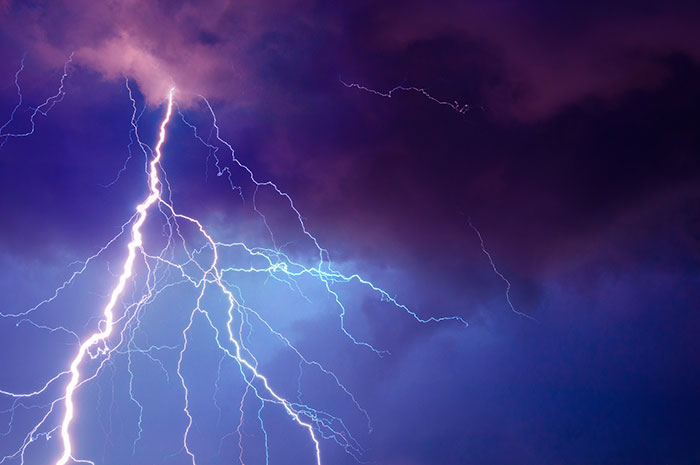By far, one of the biggest challenges my middle school students faced when Common Core State Standards were introduced was a focus on writing in response to nonfiction text. This new look at composing required students to build texts based on stimulus materials, rather than writing narrative and emerging explanatory essays.
I vividly recall one of my students, during our initial days of writing instruction, walking up to me and saying, “Can we please just write a story instead?” We eventually did write stories, and talked about how narrative could flow into all composition modes. Ironically, that student turned out to be a top performer on her end-of-year writing assessment.
The lesson I am sharing here is one I used to get my students acquainted with the skills they would need for more rigorous explanatory, persuasive, and analytical composition.
Day One: Introducing the Concept of the Flash
Flash fiction and nonfiction have emerged in the past few years as popular publishing forms online. When I first encountered the terms, I had to read up and make sure I understood exactly what was required for a story or essay to be consider a “flash.” Turns out, the idea is to be quick.
This is a medium of expression that I have even begun to see take shape in professional literature and research. Earlier this year, I attended a session on writing research in flash form, and how flash fiction could be used to explore the research process.
One of the best ways I found to share the concept of flash fiction and nonfiction was to compose with students on the first day to create a mentor text, and I also used existing mentor texts. Our class used these teacher-created and already-existing texts for discussion about what flash fiction and nonfiction require, and how authors use this brief medium for maximum effect. Both Margaret Atwood and Neil Gaiman have published engaging examples of flash fiction. In fact, Gaiman’s story “Nicholas Was” is only one hundred words, but remains one of my favorite texts. I use it in classes for a variety of purposes. Czech author Karel Capek is another writer who shows us the power of this medium. Capek was writing short shorts before flash fiction and flash nonfiction were used as terms. Based on the readings and discussions, students would then do small group and whole group brainstorming about the elements they would include in their flash essays for day two of the lesson.
The six-word story is another powerful way to show students the utility of the flash medium. The most famous of these stories comes from Hemingway: “For sale: baby shoes, never worn.” A variety of websites dedicated to the six-word story list many other examples to explore. These very brief narratives can be useful for students to see how to economize their words, and that specific details can act as the supporting structure of a story or essay. After outlining and brainstorming process, more details and descriptions can be added to flesh out the document, especially for advanced learners. Expanding on the brief form of this project served as a helpful accommodation for students who were ready to explore more.
Questions to guide this part of the process might be: How many words do we need to craft an effective story? How much detail should be added for a powerful essay? What are the major features we have to have in place to write in essay form?
Day Two: Text Exposure
On the second day of the lesson, my goal was to expose students to sources. Very often, this day was completed in collaboration with my school librarian, but I also used texts that were available in my classroom.
Prior to this lesson, I had usually gathered some informal assessment data about my students and I would sometimes ask students to list topics they found interesting. In the library or classroom, I would pull books and recommend websites so that students could complete a “reading day” based on their topic of interest.
On index cards and notebook paper, I worked with students on the second day to gather facts, information, and quotes that they found to be especially relevant to the topic they had selected for their flash essays. In this way, they could expand on their topic and find support in other works to build a foundation for their explanations. Interestingly, I found it necessary to point out to students that the term “quote” did not just to apply to information that was already in quotation marks, like dialogue. I taught my middle school students that a quote could be any piece of information contained in the book or article, and that ethical quoting meant giving credit where credit was due.
Because this was an introductory lesson to a larger concept, I saved the meticulous details of MLA quotations for a later lesson. I wanted my students to dip their toes in research first before throwing them in the deep end.
Day Three: Drafting the Ideas
On the final day of the lesson, it was time to put on paper all of the details that were needed for an effective flash essay. This meant that students would introduce their topic, explain why they chose the topic, and consider their audience in the introduction. While many standard essay components are contained in this process, the result is more compressed and makes the case for students that a well-written paragraph conveys strength in an essay—in this way, the process moves beyond the popular five-paragraph format to focus on the powerful role words can play.
Then, in two or three brief paragraphs, students would share the most salient details they found, quote their sources, and explain in “flash format” how the information related to their topic. Finally, students would write a concluding paragraph explaining what they found about their topic, where they could look for more information, and reminding their audience once more what was important about the topic to begin with.
By addressing the essay format in this way, I saved my students the struggle of trying to put together a research document that spanned multiple pages when they were still learning some of the basic structures and techniques. This process also strengthened later research products my students created.
In flash essay format, I could begin to address not only the writing standards my students would be required to demonstrate, but I could also work with students on research standards while considering a topic of interest to them.
Conclusions and Accommodations
In the interest of introducing concepts, I found flash nonfiction to be a powerful vehicle. While students later created more expansive products, this initial journey into research helped me meet a variety of standards. For students who struggled, I focused on a few key components of the essay format and emphasized refining particular parts of the essay. For example, a student who struggled might work specifically on the skills needed to build an engaging introduction, with more practice with other parts of the essay to come through carefully planned reading and writing exercises that I already knew would take place in future units.
Students who were ready to write were encouraged to work on developing more details and practice more difficult aspects of the writing and research process. In all cases, I felt I could tailor the lesson to meet specific needs, and provide an appropriate challenge.
Photo (top) via Credit Physics World
Jason DeHart is a PhD candidate in literacy studies at The University of Tennessee, Knoxville. DeHart has worked in the education profession for over a decade, and taught 8th-grade language arts at Ocoee Middle School in Cleveland, Tennessee.



